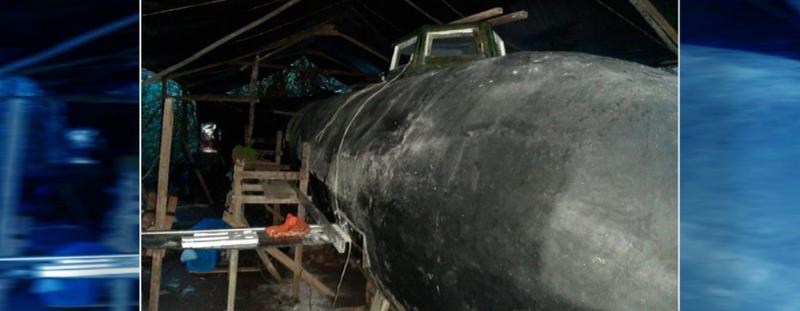 The U.S. Department of Homeland Security estimates that 32 percent of all maritime cocaine smuggled between Latin America and the United States arrives in narco-submarines. Narco-subs come in many shapes and sizes. Most are not submarines at all, but rather semisubmersibles, making them difficult to spot by eye or radar. Recently, the Columbian Navy, assisted by the U.S. DEA and local law enforcement agencies, raided a boatyard near the Cucurrupí River in the Chocó area of Colombia and found a very unusual electric narco-sub.
The U.S. Department of Homeland Security estimates that 32 percent of all maritime cocaine smuggled between Latin America and the United States arrives in narco-submarines. Narco-subs come in many shapes and sizes. Most are not submarines at all, but rather semisubmersibles, making them difficult to spot by eye or radar. Recently, the Columbian Navy, assisted by the U.S. DEA and local law enforcement agencies, raided a boatyard near the Cucurrupí River in the Chocó area of Colombia and found a very unusual electric narco-sub.
The vessel is relatively large compared to most narco-subs. USNI reports that the submarine is estimated to have cost $1.5 million to construct, according to officials. Based on the plans that were seized by Colombian authorities, had it sailed, it would have carried some six metric tons of cocaine towards the American market, valued at around $120 million.
Put into perspective, most narco submarines interdicted by the U.S. Navy and Coast Guard carry around 1.6 metric tons of cocaine, worth approximately $30 to 35 million.
The other unusual aspect of the craft was that it is electrically powered and capable of submerging and operating as a submarine. It is powered by twin propellers driven by electric motors and controlled by dual sets of diving planes, fore and aft. Ten tons of batteries installed on the vessel give it an estimated endurance of 12 hours.
A towing ring on the bow suggests that the electric sub would be towed by a larger vessel until close to its destination. It would then make the final leg on its own. Once unloaded, it would be probably be scuttled.
While the vessel recently seized is unusual, it is by no means the first narco-sub capable of submerged operations. Back in 2010, we posted about a 108 foot long (33 meter) fiberglass narco submarine with a conning tower, periscope and air conditioning system which could dive to an estimated depth of 65 feet that had been seized by the DEA and Ecuadorian authorities.
